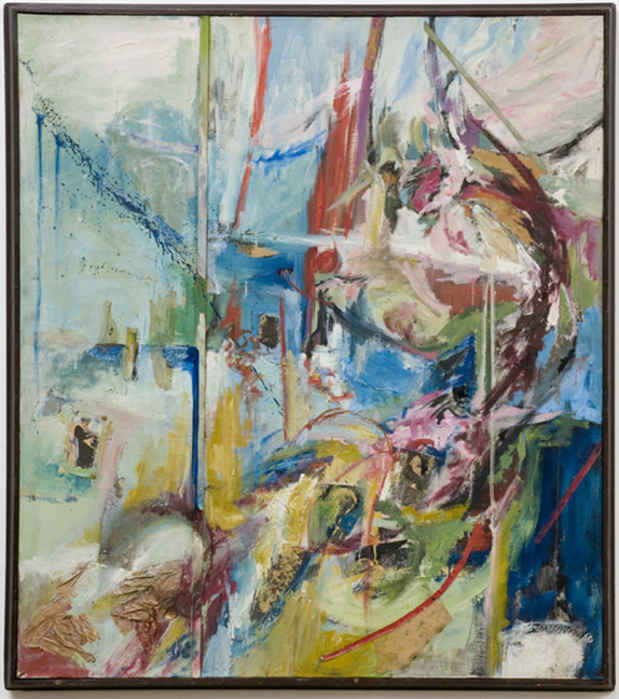Carolee Schneemann "Painting, What It Became"
P.P.O.W.

This event has ended.
"I'm a painter. I'm still a painter and I will die a painter. Everything that I have developed has to do with extending visual principles off the canvas." - Carolee Schneemann, 1993
P.P.O.W Gallery presents Painting, What It Became, our third solo exhibition of Carolee Schneemann's work since 2002. Curated by Maura Reilly, the Founding Curator of the Elizabeth A. Sackler Center for Feminist Art at the Brooklyn Museum, this will be Schneemann's first exhibition that exclusively surveys her paintings.
Carolee Schneemann's paintings from the late 1950s and 1960s have been a largely overlooked aspect of her oeuvre, relegated to the margins, considered early or immature work, as opposed to ingenious corollaries to the Kinetic Theater, Judson Dance Theater, performances, films she was producing simultaneously, and/or as harbingers of what was to be produced in the decades to come. This is the first exhibition dedicated to Schneemann's paintings—the last being one in 1982 at the Max Hutchinson Gallery in NYC. Its aim is to reconsider Schneemann as a painter, who never ceased conceptualizing all her work as always related to the painterly gesture, to prying open 'the frame', and to conceiving of the body as tactile material; that is, as paint, canvas or paintbrush.
Painting, What It Became traces Schneemann's works from 1957 to the present, highlighting the transformation from traditional paintings on canvas in the lineage of Abstract Expressionism (Summer I: Honey Suckle, 1959), to painting-constructions (Tenebration, 1961, Sphinx, 1962, Meat Joy Collage, 1999), kinetic sculptures (Fur Wheel, 1962, War Mop, 1983), to performances (Body Collage, 1968, Up To An Including Her Limits, 1973–76), and films (Fuses, 1965, Infinity Kisses—The Movie, 2008). This historical trajectory through Schneemann's work aims to reexamine how each medium developed "has to do with extending visual principles off the canvas." Her most significant works, treasured by many, misunderstood by some, can be re-envisioned, then, as performative-paintings, filmic-paintings, kinetic-paintings, always with the pictorial plane of painting, however shattered and gestural it may appear, remaining as the grounding mechanism and force field.
The monumental Four Fur Cutting Boards 1963—the kinetic painting-construction in front of which the artist performed her famous photographic series, Eye Body (Thirty Six Transformative Actions)––is the centerpiece of the exhibition.
Media
Schedule
from February 21, 2009 to March 28, 2009
Opening Reception on 2009-02-21 from 18:00 to 20:00